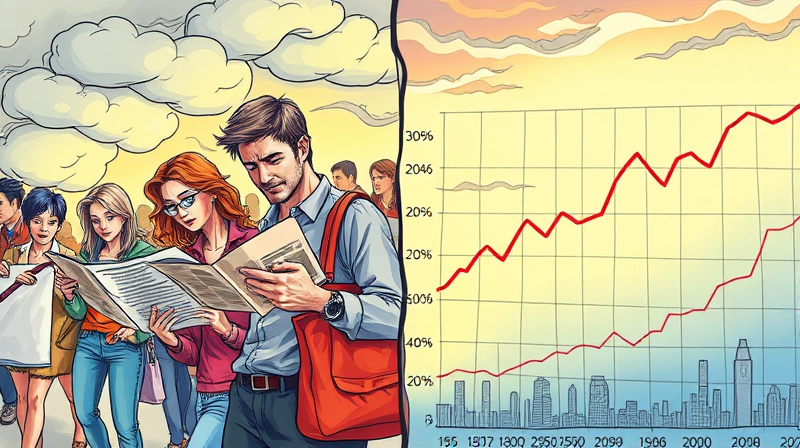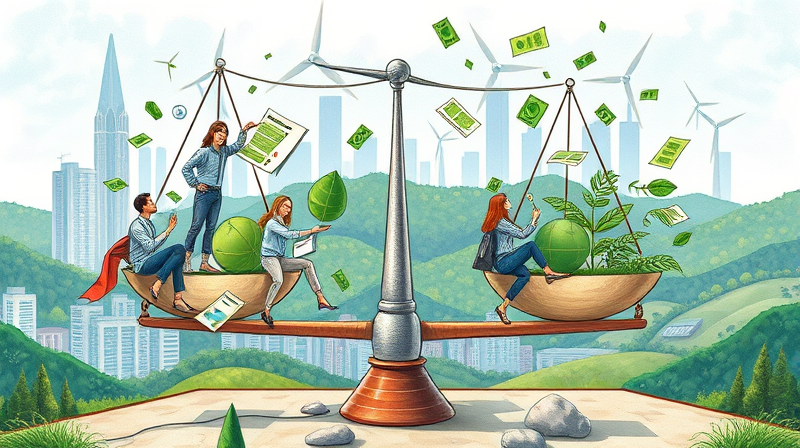
In the midst of evolving economic signals and policy adjustments, consumer beliefs about future inflation have shown remarkable resilience. Recent surveys indicate that expectations remain above central banks’ targets, reflecting deep-seated concerns that transcend individual data releases. While policymakers maintain a vigilant stance, the public’s outlook on prices suggests that the battle against inflation sentiment is far from over.
Over the past year, US households have consistently reported stubborn price anxieties among households, with short-term forecasts often diverging from policy goals. Data from the New York Federal Reserve reveal that one-year-ahead inflation expectations peaked at 4.4% in April 2025 before moderating to 4.0% by June. Alternative measures capture a drop to 3.2% in May, down from 3.6% the previous month, marking the lowest level in three months.
Medium- and longer-term outlooks follow a similar pattern of cautious adjustment. Consumers anticipate inflation of roughly 3.0% three years out, with slight variations depending on survey timing. Five-year expectations have eased to around 2.6%, inching closer to the Fed’s 2% objective but still signaling wariness about sustained price pressures.
Although these numbers have edged lower, they remain elevated relative to the Federal Reserve’s target. This persistent gap highlights the challenge facing monetary authorities: crafting policies that not only curb actual inflation but also reshape the public’s expectations.
In response to evolving price dynamics, the Federal Reserve has kept its benchmark policy rate steady at 4.25%–4.50%. Though some market participants pressed for rate cuts in mid-2025, Fed officials opted for a cautious approach, citing considerable uncertainty around the inflation outlook and broader economic prospects. The decision underscores a balancing act: avoid stifling growth while ensuring that inflation trends do not reignite.
Across the Atlantic, the Bank of England moved to lower its own rates but flagged persistent inflationary risks. This dichotomy of action versus caution reflects the delicate interplay between data interpretation and forward guidance. Markets have reacted with modest volatility, pricing in the Fed’s patience as both necessary and uncertain.
On the consumer side, elevated price forecasts continue to shape spending behavior. With households anticipating higher costs, saving rates and discretionary spending have shown signs of adjustment, further complicating the policy transmission mechanism. Such feedback loops reinforce the need for clear communication and consistent action from central banks.
Several factors contribute to the resilience of inflation expectations, many of which stem from deep structural or psychological roots. The lasting psychological impact of high inflation in recent years has left consumers more sensitive to price changes, while specific sectors exhibit particularly slow adjustments.
Even as goods inflation moderates, services remain sticky price segments with slower adjustments. Landlords, healthcare providers, and educational institutions often revise rates infrequently, embedding higher costs into longer-term expectations. Meanwhile, recent tariff hikes have sown uncertainty about the extent and timing of price pass-through, leading businesses to absorb costs or delay increases.
Disagreement among consumers on future inflation has also widened. The gap between the most and least pessimistic respondents reflects divergent experiences and outlooks. Regions with sharper price increases, or those more exposed to trade tensions, report higher forecasts than areas benefiting from moderating global commodity prices.
Sticky inflation expectations influence a spectrum of economic behaviors and policy considerations. Unemployment forecasts soared to a mean 44% in May—the highest since April 2020—suggesting that consumers brace for labor market weakness alongside price pressures. Earnings growth expectations, meanwhile, eased to 2.8%, potentially dampening wage negotiations and spending plans.
Policymakers grapple with both data variability and theory when determining the next steps. Debate continues over whether to target headline inflation or to focus on sticky components such as services and wages. The former offers a clearer metric, while the latter addresses the core drivers of enduring price changes.
Emerging evidence suggests that a nuanced approach may be necessary, one that balances traditional tools with targeted measures to address sectors where price rigidity is most pronounced. Innovations in forward guidance and conditional commitments could help anchor expectations more firmly, though their effectiveness hinges on credibility.
Despite concerted policy efforts, persistent high expectations despite interventions indicate that inflation psychology has taken root. While actual inflation has showed signs of moderation—annual CPI ticked up to 2.5% in May—public forecasts remain above target, underscoring the complex interplay between real-world price movements and collective sentiment.
Central banks face the arduous task of demonstrating that their strategies can reshape long-term outlooks without derailing economic momentum. As data continue to arrive and markets adjust, the critical question will be whether policymakers can bridge the gap between headline achievements and the public’s enduring concerns. For now, the sticky nature of inflation expectations stands as a testament to the challenges ahead and the vital importance of strategic communication, patience, and policy precision.
References













